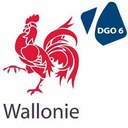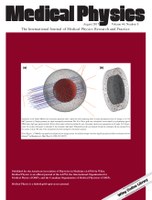Theraplus
Programme : DGO6 WBHealth 
Résumé
The development of nanomedicine offers the possibilities to combine novel nanoscale materials to enhance the performance of radiation therapies. Numerous experimental and simulation studies evidence the high potential of gold nanoparticles (AuNPs) as radiosensitizing agents in combination with ionization radiation. The efficacy of NPs used as radiosensitizers was demonstrated by several groups in vivo and in vitro, and most of them focused on conventional photons. AuNPs are expected to improve the effects of the radiotherapy by their ability to increase dose deposition in the target volume. However, the major constrain of conventional radiation therapy uses X-rays is the damage to the healthy tissue that surrounds the tumor being treated.
 To address this issue, the use of proton beams is actually growing, driven by their particular physical properties. Proton beams also transfer energy into healthy tissue in front of the tumor but to a much less extent compared to X-rays. Most of the energy is deposited at the targeted volume. Radiotherapy with charged particles has become more prevalent in clinical practice over the past 20 years, and the possibility of radiosensitization using AuNPs in the particle therapy (protons or carbons) is an attractive prospective.
To address this issue, the use of proton beams is actually growing, driven by their particular physical properties. Proton beams also transfer energy into healthy tissue in front of the tumor but to a much less extent compared to X-rays. Most of the energy is deposited at the targeted volume. Radiotherapy with charged particles has become more prevalent in clinical practice over the past 20 years, and the possibility of radiosensitization using AuNPs in the particle therapy (protons or carbons) is an attractive prospective.
Given the emerging evidence of biological relevance of AuNPs and the appealing physical properties of proton beam, the purpose of this project is to specifically target tumors with metallic nano-objects in order to promote local dose enhancement without increasing non-target dose during particle therapy.
In a former project (TARGAN), we demonstrated that it is possible to synthesize sub-10 nm Au-NPs, to chemically functionalize them with amine chemical groups and to label them with either monoclonal mAbs directed against mouse endoglin (CD105), a homodimeric cell surface glycoprotein that is mainly expressed on the surface of endothelial cells, or with cetuximab, a mouse-human chimeric monoclonal antibody that binds competitively and with high affinity to the Epidermal Growth Factor Receptor (EGFR). PET-imaging of our Au-NPs nano-objects (89Zr mAb-labelled) demonstrated a remarkable in vivo specificity, similar to the tumor uptake of uncoupled mAbs.
In this project, we build on the results of TARGAN and apply them to protontherapy, using our technology of AuNPs bioconjugated with monoclonal antibodies to specifically target tumors that will be later exposed to proton irradiations or to X-rays (for comparison).
Promoteur
Université de Namur
Responsable du Projet :
- Stéphane Lucas, Département de Physique, NARILIS (Namur Research Institute for Life Sciences), Physique de la matière et du rayonnement, Groupe de recherche sur les nanostructures de carbone, Namur Nanosafety Center.
Chercheur impliqué :
- Anne-Catherine Heuskin, Chercheur, Département de Physique, Physique de la matière et du rayonnement, NARILIS (Namur Research Institute for Life Sciences).
Partenaires
- Université de Namur, NARILIS - URBC - Carine Michiels et Olivier Feron (Dpt de Biologie)
- UCL : Gallez , B., Co-investigateur
- ULG : Martinive, P., Co-investigateur
Publications
Metallic nanoparticles irradiated by low-energy protons for radiation therapy: Are there significant physical effects to enhance the dose delivery? A. C. Heuskin, B. Gallez, O. Féron, P. Martinive, C. Michiels, S. Lucas. Med. Phys. 44(8), August 2017.
LET-dependent radiosensitization effects of gold nanoparticles for proton irradiation. Li S, Penninckx S, Karmani L, Heuskin AC, Watillon K, Marega R, Zola J, Corvaglia V, Genard G, Gallez B, Feron O, Martinive P, Bonifazi D, Michiels C, Lucas S. Nanotechnology. 2016 Nov 11;27(45):455101. Epub 2016 Oct 3.











